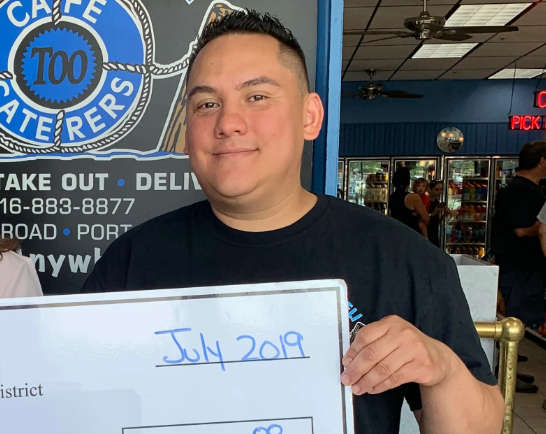Karen Ting, vice president at Lloyd’s Planning LLC., has been with the company since 2004. She has been working in insurance since 1997. She noted that the goal at Lloyd’s Planning is “to find reasonable, affordable, adequate coverage for all Fire Islanders.”

Karen Ting, vice president at Lloyd’s Planning LLC.
Fire Island News (FIN): I noticed that your website displays the slogan: “Insurance from the sea to the mountains.” I was wondering about the connection between the company and Fire Island.
Karen Ting (KT): The initial connection is with Arnold Kotzen (CEO). He has been a Fire Islander since the 1970s. Originally the only insurance plan that was available was New York Property, and they offer very basic coverage. So, Arnold started looking into a company that would provide regular homeowners coverage for coastal property, as you would on the mainland. That’s how it all started; but we aggressively looked for more markets after Hurricane Sandy. Many companies that had been covering coastal properties pulled out from the area following Hurricane Sandy since it was no longer profitable for them. The carriers that were still providing coverage for coastal properties increased their rates substantially. Now FEMA is making up for the deficit from Hurricane Sandy too, so they’ve been comfortably increasing their rates for three to four years, up to 25 percent. As a result, a lot of people had to give up their insurance because they couldn’t afford it anymore.
FIN: Have you ever visited Fire Island?
KT: Every year, the second week after the Fourth of July, the whole company will go out there. We go to Ocean Bay Park, Ocean Beach, Seaview, Fair Harbor and Saltaire. I think it’s wonderful; the people are extremely friendly. Each town has its own characteristic, like most restaurants are in Ocean Beach, while Fair Harbor is a bit more family oriented, but I love them all. And I love the way it’s persevered; the beach is very clean. I would recommend for people to spend a weekend there.
FIN: For other people like me who may not know as much about the insurance industry, what would you say are the key things for people living on the South Shore or Fire Island to know?
KT: The most important thing is to insure your properties to the replacement cost value. You must be able to insure at a limit where you can rebuild the property. FEMA only offers up to $250,000 on a building. There were a lot of problems with that during Hurricane Sandy because houses were shifted to a different lot, pushed by the ocean. They didn’t have enough money to rebuild the house, so they either had to just leave it the way it was or leave an empty lot. The only other option was to pay the additional cost to rebuild the house. So, if the replacement costs on a house were $750,000, they would receive $250,000 from FEMA and then pay $500,000 out of pocket. Homeowner’s Policy is similar, except you may insure a higher value. With that, the homeowner needs to adjust each year because the cost of material and labor has increased substantially within the past four to five years. On Fire Island, material is carried on the golf cart to the property, so it is at least a minimum of an additional 10 or 15 percent. People should also be aware that they need liability insurance on their properties. It is important to protect third-party claims, including injuries. So, make sure you request that renters have their own liability coverage to protect both the owner and the tenants.
FIN: What are the recent changes that you have witnessed in the market, particularly any that affect Fire Island property owners?
KT: The cost. Especially after the pandemic, a lot of residents on the mainland or in New York City have made Fire Island their primary residence, which increased the sales price on Fire Island for real estate by at least 25 to 30 percent.
FIN: What are your thoughts on flood insurance and what should our readers know?
KT: A couple of years ago we only had FEMA as an option for flood coverage, but right now we have a lot of private carriers that allow you to insure up to $1 million on the property. Some of those carriers are very affordable and reasonable. We also have a new plan that can combine the flood coverage and the homeowner’s coverage on one policy. This package is more efficient because sometimes people forget to renew their flood coverage or think that it is automatically included in the homeowner’s policy, which is not the case.
FIN: Climate change is certainly a concern for those who own coastal properties, with hurricanes or shrinking beaches and rising sea levels. Can you speak to that through an insurance lens?
KT: I learned a lot following Hurricane Sandy. I think the last serious hurricane we had like that was maybe a hundred years ago. So, Sandy made people realize how important flood insurance is. It also created a shift in insurance mandates. All banks now have a requirement that if a property lies in a flood zone, the homeowner is required to purchase flood insurance.
FIN: Would you continue to recommend that people buy or build new properties over on Fire Island? Or is that getting increasingly risky?
KT: I think it’s more a matter of protecting the property. If you’re by the coast, it doesn’t matter if you’re in Bay Shore, Fire Island or Manhattan. There are going to be risks. I think the absolute best thing to do would be to make sure you have the right coverage and are insured up to value.




























